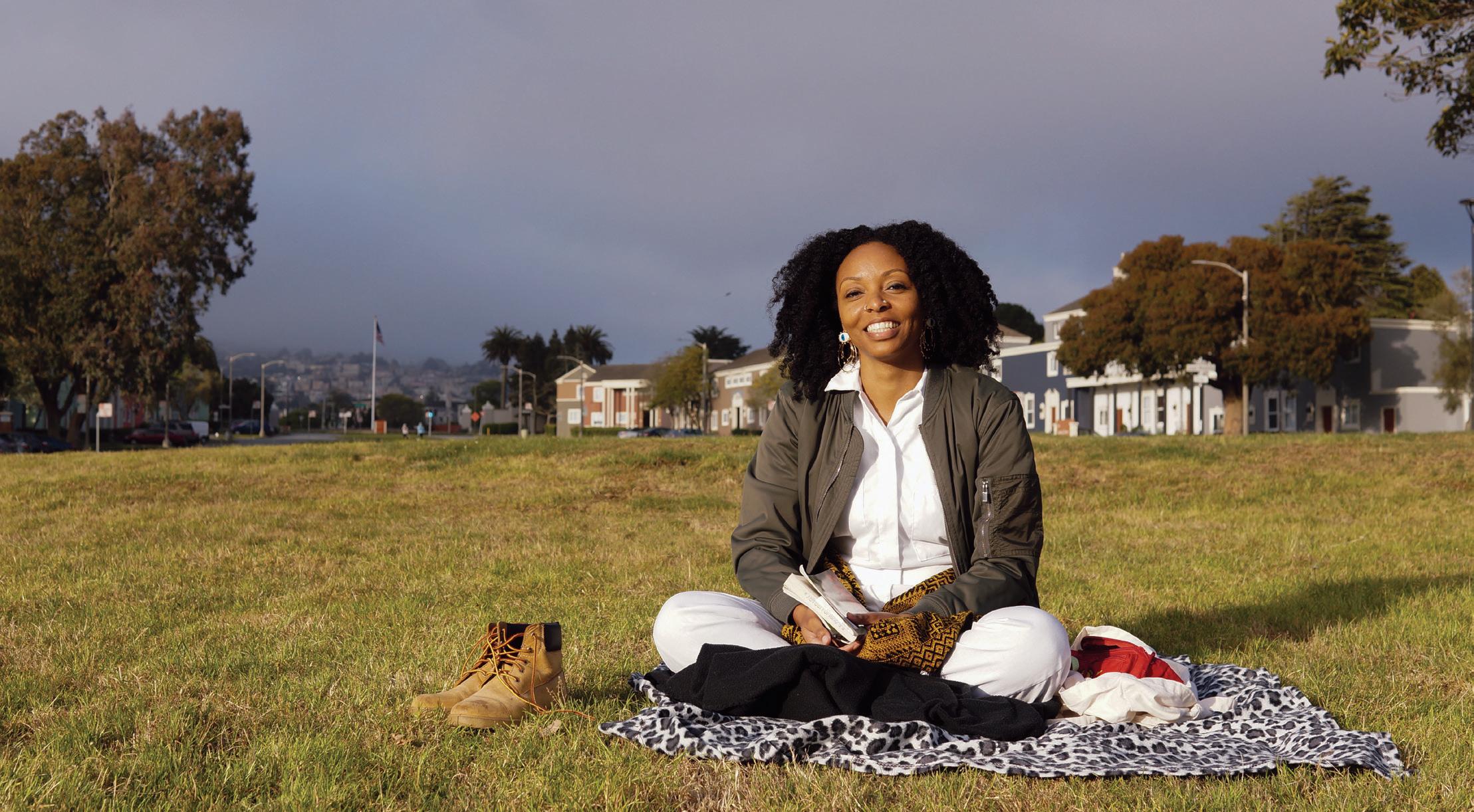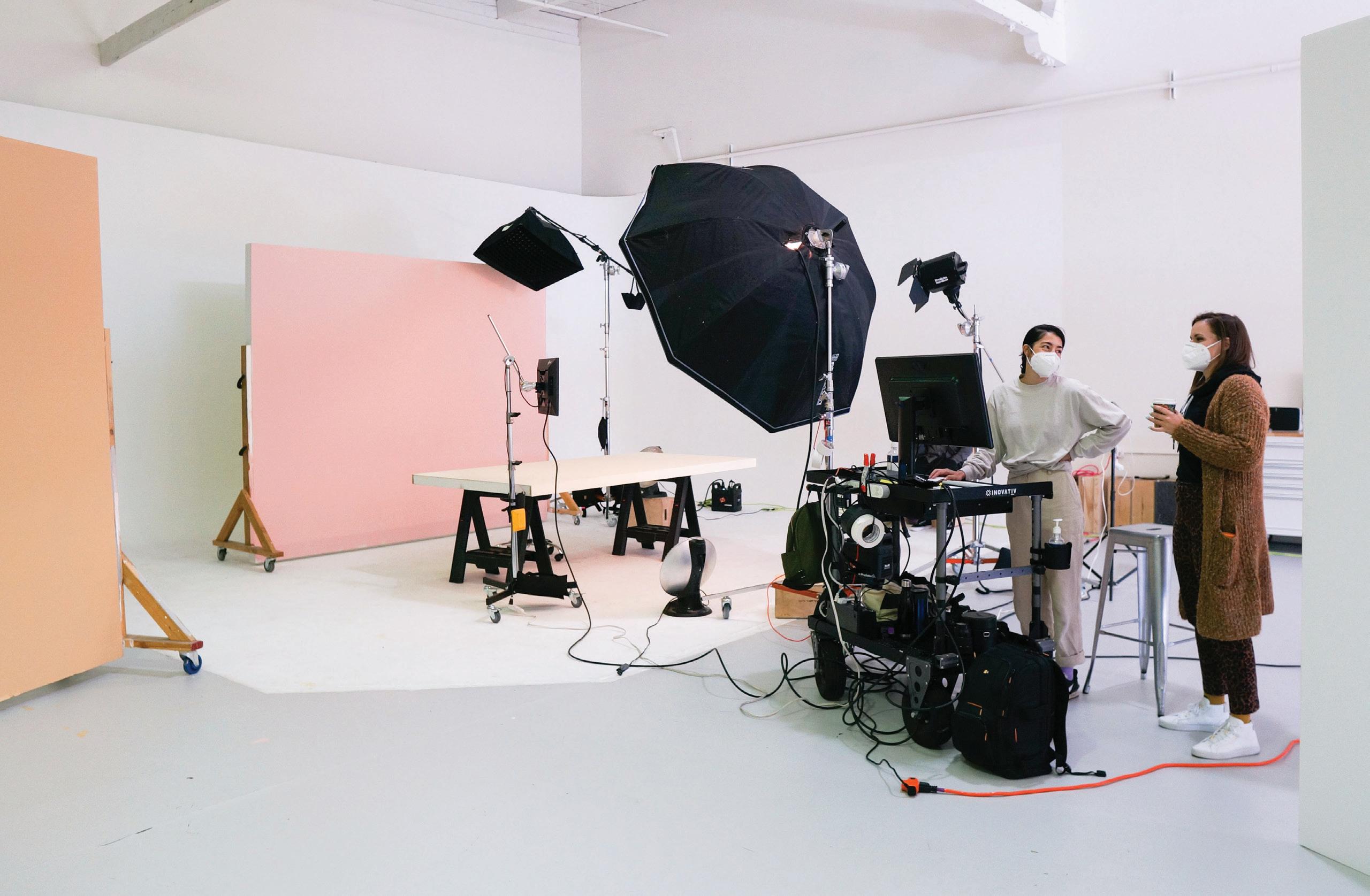
8 minute read
Through Her Eyes
María del Río, left, chats with her digital technician Victoria Manildi O’Brien, right, at her photo shoot for Haleys Beauty, a Bay Area based makeup company.
Del Río photographs a model during her photo shoot for Haleys Beauty.
Advertisement
Women of color diversify the workplace in front of and behind the camera
Story and photography by Xiaofan Fang
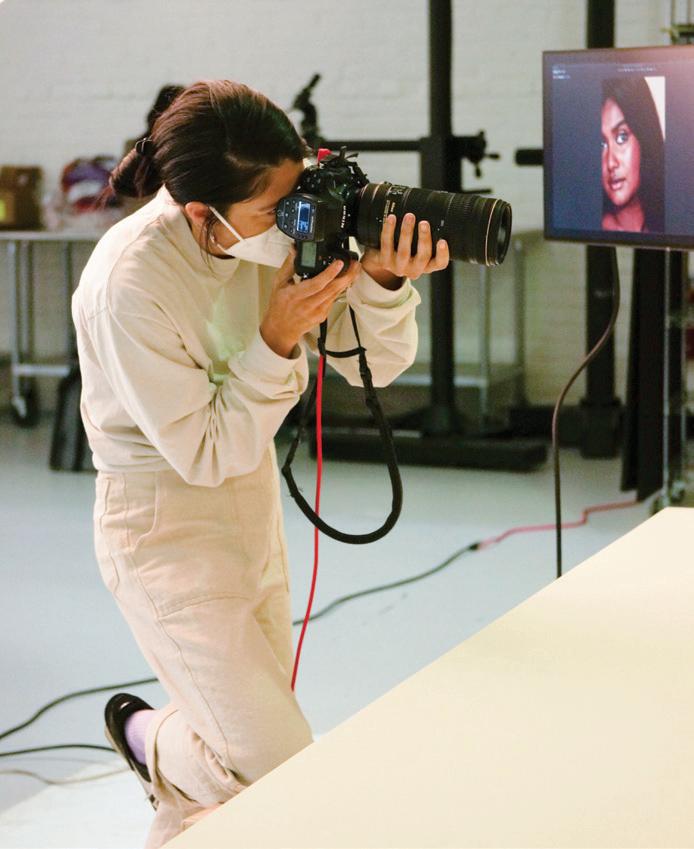
Latina photographer María del Río joined a pre-production meeting about an upcoming shoot. The client shared their lineup of eight models. “They were all blonde and blue-eyed without exception,” the former City College of San Francisco student and Oakland-based photographer recalled.
“I notice that all of the talent you suggested are white women, and I’m wondering if there is room to incorporate diversity,” del Río pointed out. The client seemed flustered and explained that it was not intentional. After some discussion they swapped in two models of color.
White faces had dominated for decades. According to a 2015 article in The Atlantic magazine titled “The Least Diverse Jobs in America,” the arts and entertainment industry was the third least diverse industry in the United States.
Early in her career, del Río would tell her agent, Katie Patterson, about the unsettling lack of diversity. Patterson was nervous that if del Río spoke up, she would lose clients. When she was offered jobs with non-diverse casting, Patterson would tell del Río to prepare to “have the talk.”
Things have changed since then. Diversity in photography is now a hot topic and racial inclusivity on the runway has trended upward too. According to the fashion industry website The Fashion Spot, only 18% of runway models were people of color in the spring 2015 season globally. By the fall 2020 season, 41% were models of color. Achenrin Madit, a woman of color
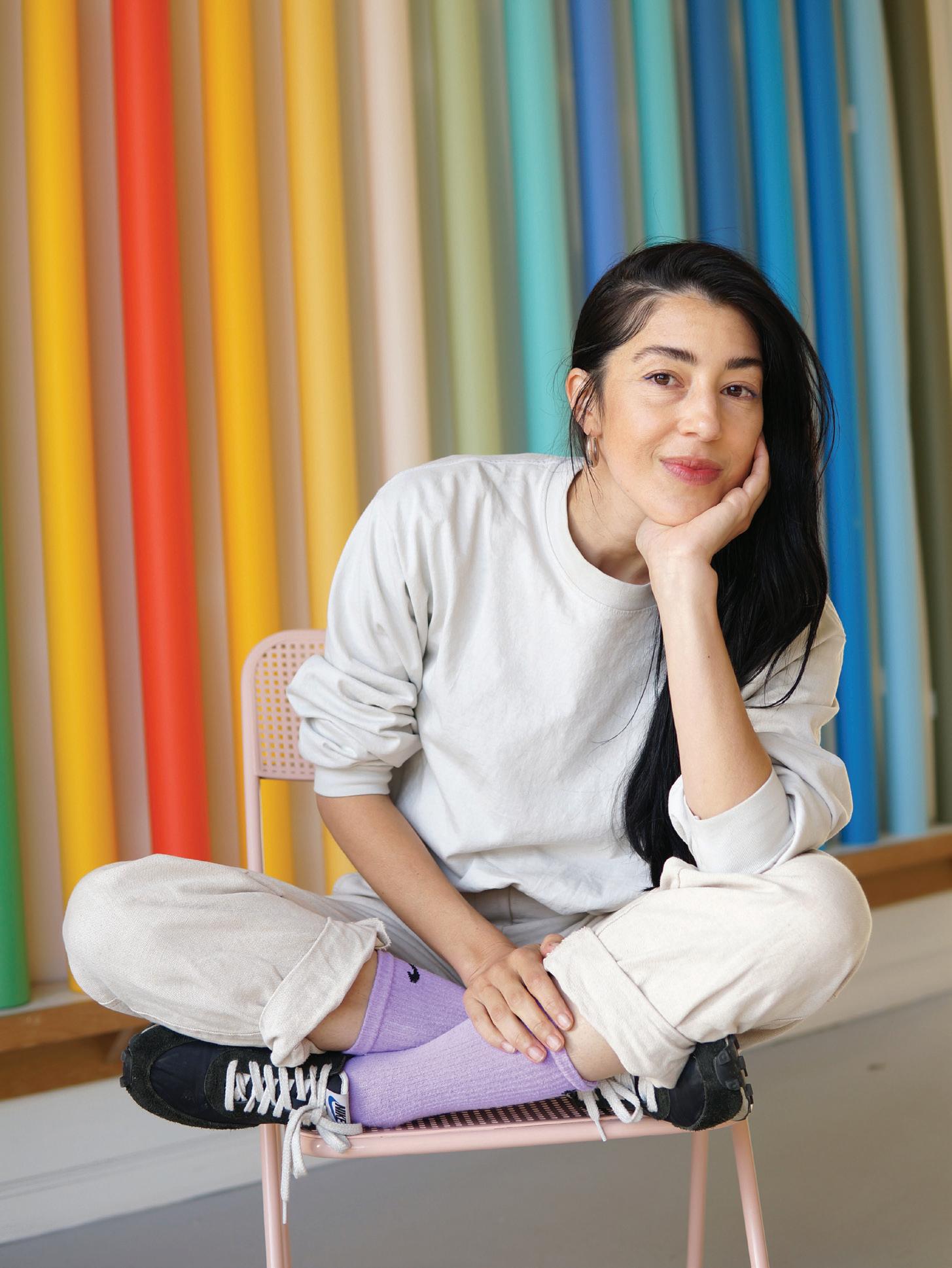
Photographer María del Río sits for a portrait while on set of her shoot for Haleys Beauty.
of South Sudanese descent, appeared in 38 shows and racked up more runway miles than any other model had that season.
“So much has changed,” del Río says. “Nowadays, clients come to me with all women models of color. There is no need for that awkward conversation... This change is so exciting and beautiful to see.”
On a recent ad campaign shoot, del Río was chatting with the art director, the prop stylist and the client — all of whom were white women. The art director commented, “It’s so beautiful that the ad campaigns are so diverse now. We’ve come so far with diversity!”
Del Río agreed. The client had indeed cast a wide range of models, diverse in age, race, and gender. However, out of the 12-person crew behind the camera, only two were people of color. “When you are a part of the minority, you notice this imbalance immediately,” del Río reflects.
According to the 2019 U.S. Census, 53% of professional photographers were male and 73% were white. Jung Fitzpatrick, a Korean-American photographer and former City College student, knows this from experience. Recently, while on set as a COVID-19 compliance officer, she noticed that the entire crew was white, except an assistant and herself. She was not surprised. “For most sets I’m on, I assume that it’s going to be mostly white people.”
In the film industry, “it’s even worse,” del Río says. 60% of professional directors were male and 76% were white according to the 2019 U.S. Census.
“In any category of directing, very few women had a chance,” says music video and advertising director Vanessa Beletic. As recently as four years ago, her female colleagues were rejected by production companies with blatant excuses like “We already had a woman on our roster” or “We don’t get the kind of work you are right for.”
“If a female director was fortunate enough to be signed,“ Beletic says, “she would get commercials for tampons, birth control, and maybe, makeup.” After directing officially for seven years and unofficially for 15, she was offered a sports
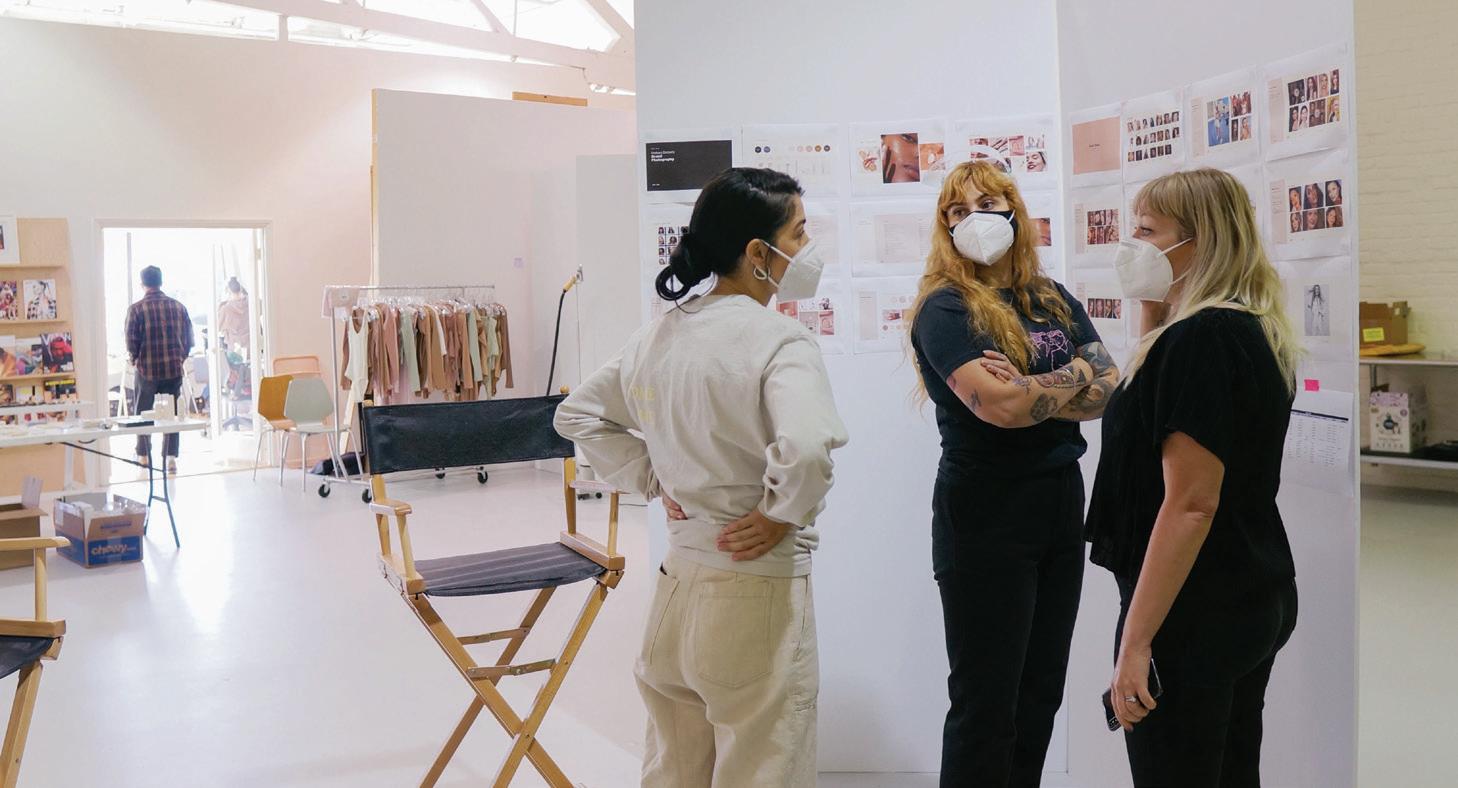
Del Río, left, discusses concepts with the hair stylist’s assistant Amber Jahn, center, and the art director Danielle Moore, right, at the photo shoot for Haleys Beauty.

drink commercial for the first time last year, an opportunity that she says is traditionally given to men.
Women make, on average, 79 cents for every dollar men earn. However, women of color face an even wider pay gap. Black
women earn 65 cents on the dollar, while Latinas earn a dismal 54 cents, according to a 2016 article in The Atlantic magazine.
“The threshold for diversity can still be about cisgender white women, rather than women of color, black women, and indigenous women. That doesn’t even include gender-expansive folks,” says Tanea Lunsford Lynx, women’s and gender studies instructor at City College.
There are few women of color in managerial positions within all fields and even fewer in executive roles. White men make up 35% of the entry-level roles and 44% of managerial positions according to the 2020 McKinsey Institute report on women in the workplace. While the percentage of white men in higher positions increases, the career trajectory for women of color is not promising. They only make up 18% of entry-level roles and 12% of managerial positions.
“When I look at production companies’ websites and rosters, all of the founders and executive producers are white and mostly white men,” Beletic says. She thinks they only hire people of color when they fear they might get audited.
“It’s frustrating that they think they have done their diversity duty,” Lynx says.
Having people of color in executive and hiring positions is crucial. “Whoever’s in power is going to open a door and give an opportunity to others. It’s my chance to give a chance to women and people of color and hire them as my key collaborators,” Beletic says.
Without women of color in higher positions, there are also fewer role models. While taking a photography course at
her local community college in Santa Fe Resources are now beginning to surface Recently, del Río was hired to during high school, del Río was to help women and people of color break photograph an intimate campaign discouraged because “there wasn’t a into the photography industry. “One that about female empowerment. One of single person of color in that class.” She I really love is Authority Collective,” del the models, a breast cancer survivor, distinctly remembers thinking, “This art Río says. Authority Collective, founded would be photographed topless. Del Río form is not for me.” in 2017, “works to empower marginalized felt it was important to hire an
Del Río did not pursue artists with resources and all-women and racially diverse crew. photography again until she was community, and to take action against Given the status quo of the industry, studying Latin American sourcing a and Latino Studies a few years later. “I was able to learn more about and take “Someone in disadvantage brings a certain level of awareness that a privileged person may not have.” diverse crew was far from an easy task. pride in my identity.” She signed up for — María del Río After many months of another photography class. searching, “It became exciting and attainable again.” systemic and individual abuses” she helped to hire 40 women, including
Del Río faced an economic barrier when according to their website. the director of photography and all of the she first started out. “I had to be able to “Out of all the organizations that I’m technicians. 65% of the crew and talent afford a camera, lenses, film, processing part of or used for hiring, they are doing were women of color. fees, and access to the dark room. My it right,” del Río says. “They are really “The more perspectives there are, the mom saved up to buy a used camera for working to get their members hired and more truth there is in the images and the me and it didn’t work,” she says. “The into hiring positions.” Through Authority storytelling” del Río says. “Someone reality is that you’re buying subpar Collective’s well-connected network, del (at a) disadvantage brings a certain level equipment. You’re starting with a Río has received both scholarships and of awareness that a privileged person roadblock already.” actual jobs. may not have.”
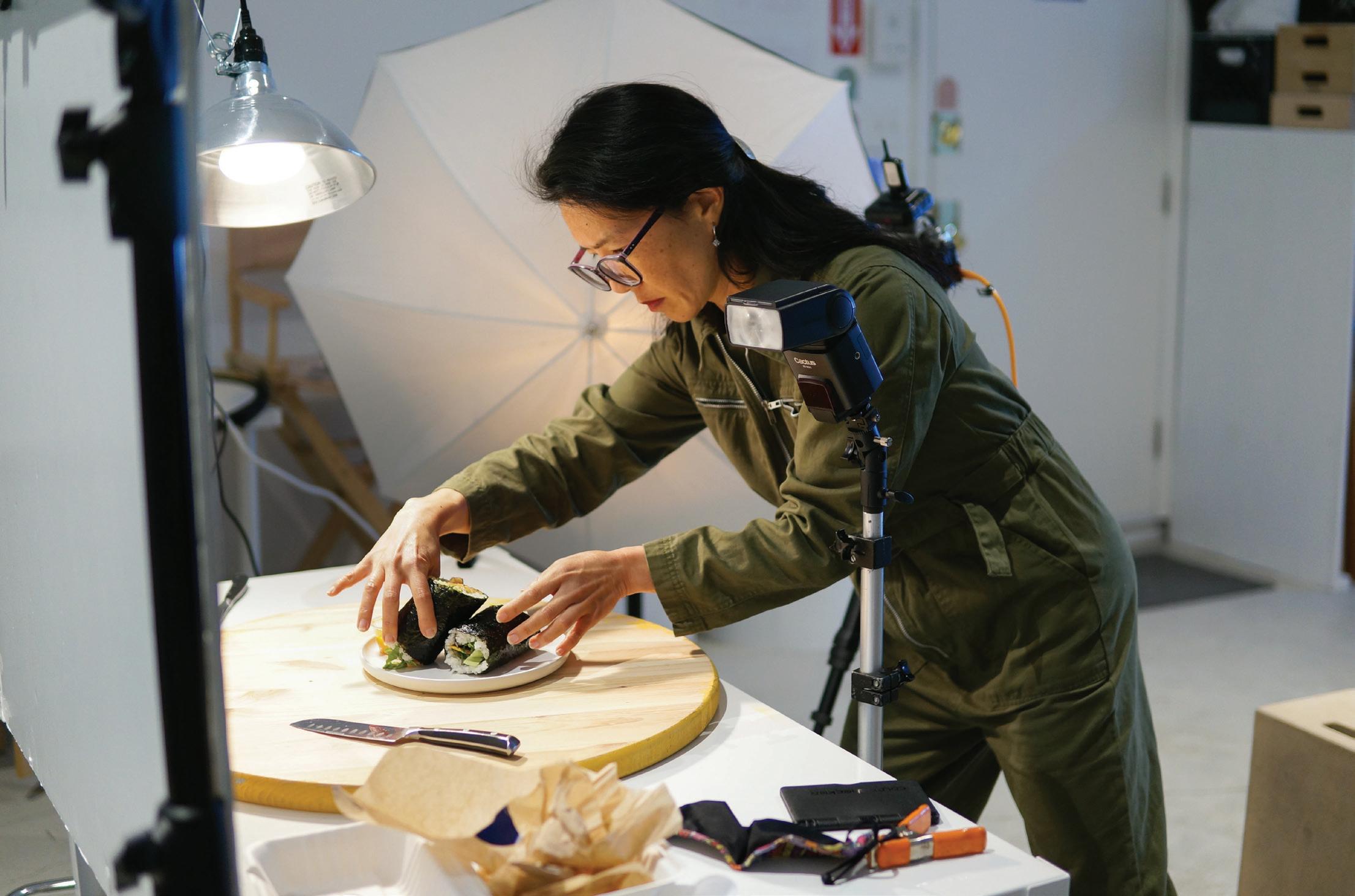
Beletic and Jung pay it forward through mentoring and helping women and people of color. Jung promotes her first workshop “The ABCs of photo assisting” in groups for women and diverse photographers. “Being my own boss, I get to create this world and culture for my business, which is really exciting,” she says.
Beletic mentors black women who want to become directors. “I want to support the folks that feel like they have the least chance. It has been really wonderful. … They all feel like they are leveling up,” Beletic says.
Del Río is busy shooting on set for a women-founded beauty brand. She clicks the shutter a few more times. “We got the shot, thank you,” she says to the red-haired model holding a light-shade foundation product up to her fair cheeks.
She gestures to the next model to sit down. Fourteen models, each

Fitzpatrick adjusts lighting equipment during a test shoot in her SOMA studio.
with different skin tones, arrive on set throughout the day. Del Río steps away from the camera and joins the art director and digital technician to inspect the images on the monitor. Although the crew is mainly women, few of them are women of color.
After last summer’s protests in the wake of George Floyd’s murder, the conversation about diversity resurfaced in the mainstream media. “Being a woman of color is a trend now,” Beletic says.
However, being trendy is by definition ephemeral. “We need to have patience,” she says. “A lot of people feel that there’s an over-correction. I 100% welcome the over-correction.” She believes that the best talent will rise to the top.
